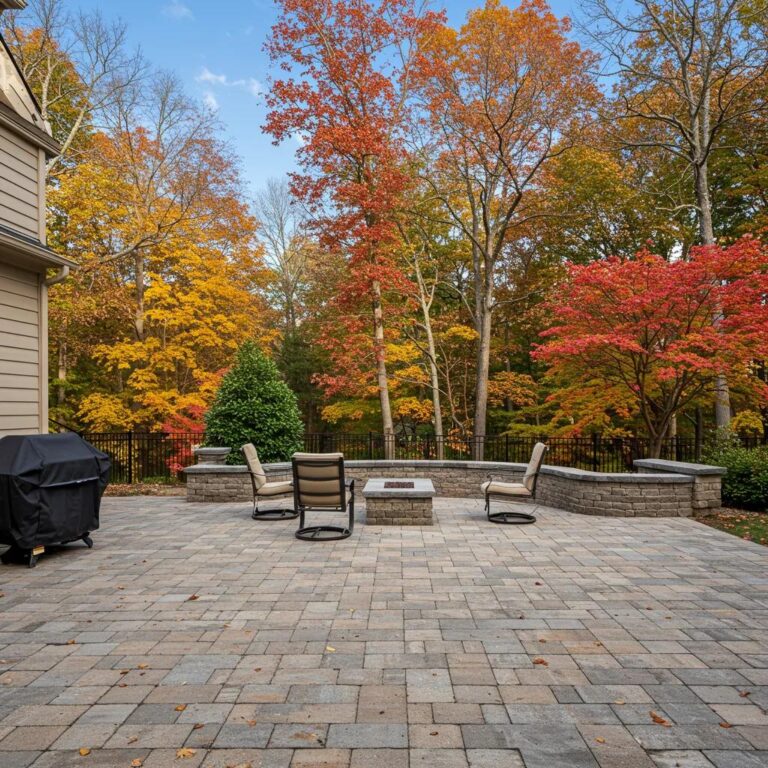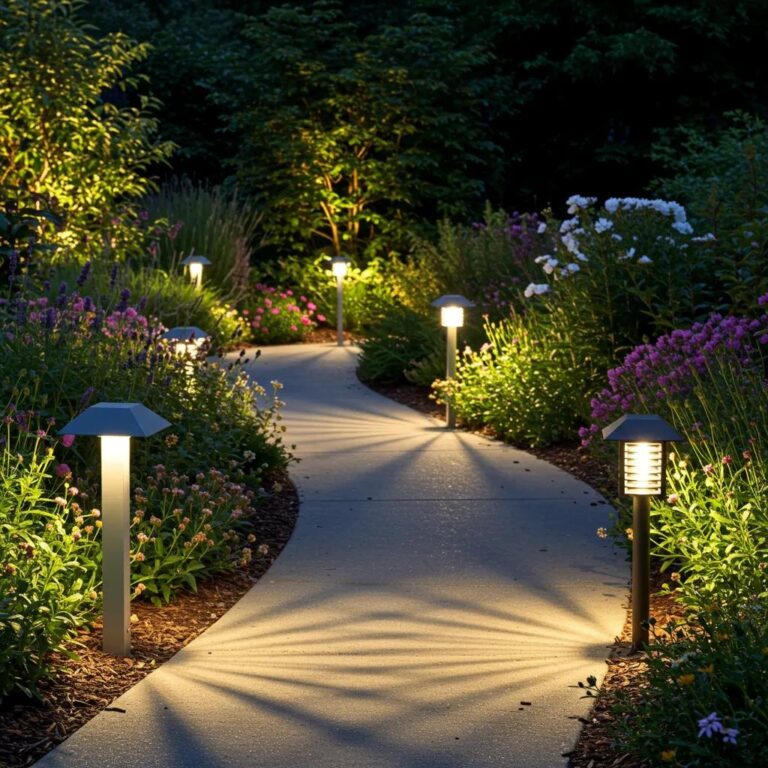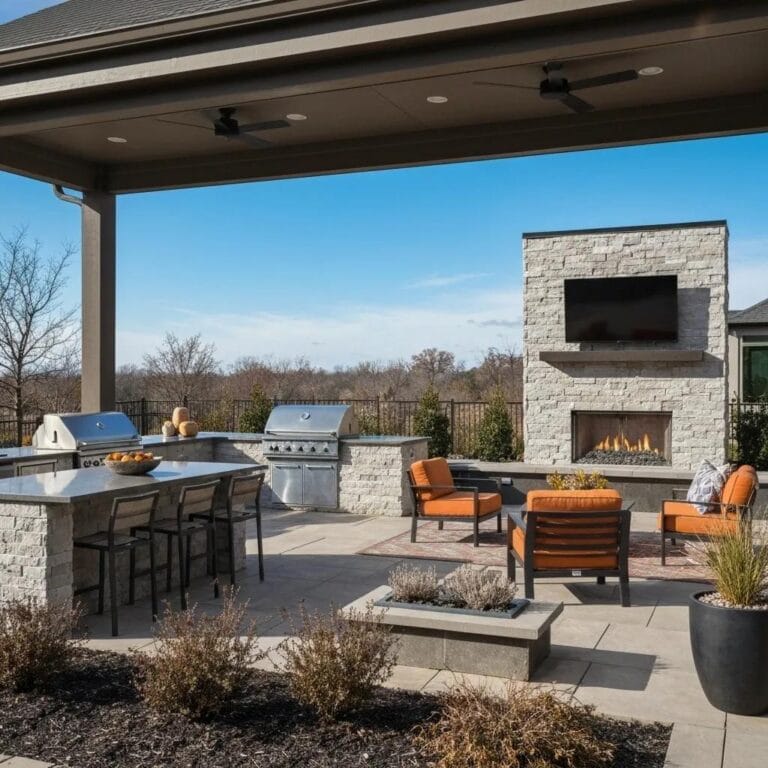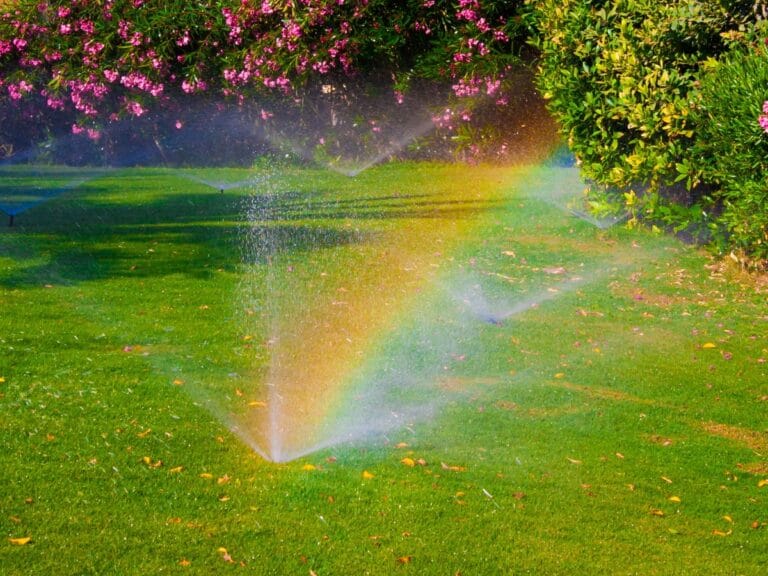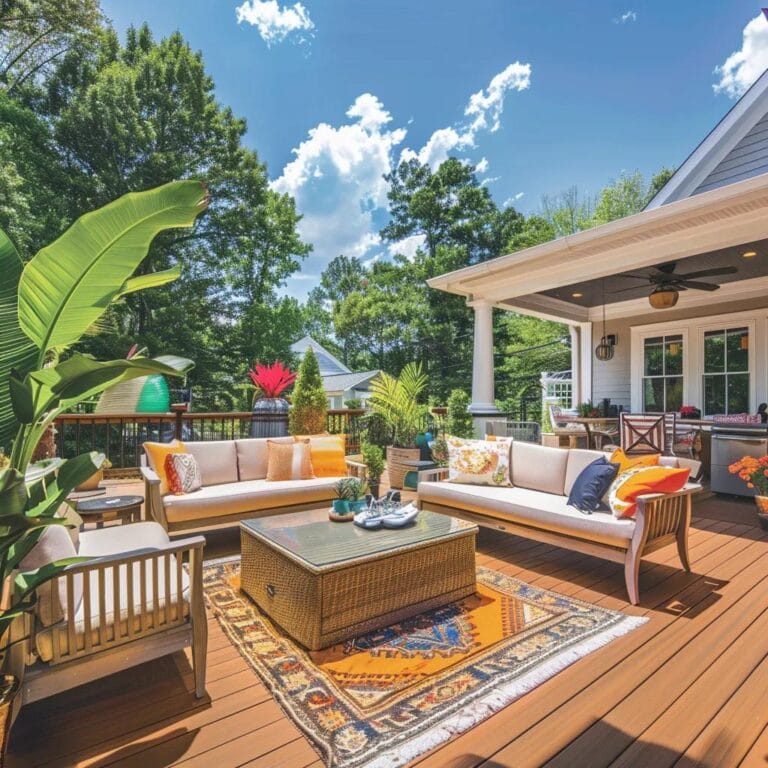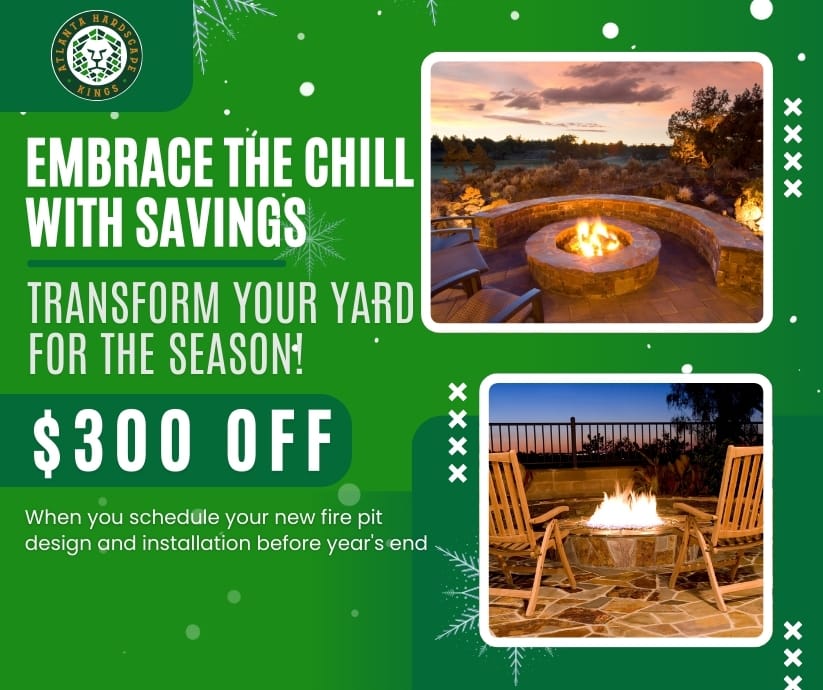As autumn settles in Atlanta, November presents a critical window for homeowners to perform essential hardscape maintenance that protects their investment from winter weather and ensures their outdoor spaces remain beautiful and functional. The falling leaves, fluctuating temperatures, and increased rainfall common this month can lead to issues like stained pavers, clogged drainage, and cracked surfaces if not addressed proactively. In this guide, we’ll walk you through the key hardscape maintenance tasks—from clearing debris and sealing surfaces to checking for drainage issues—so you can preserve the integrity and appearance of your patios, walkways, and retaining walls through the colder months ahead.
Atlanta Homeowners’ November Guide to Hardscape Maintenance
Why Is November Essential for Hardscape Maintenance in Atlanta?
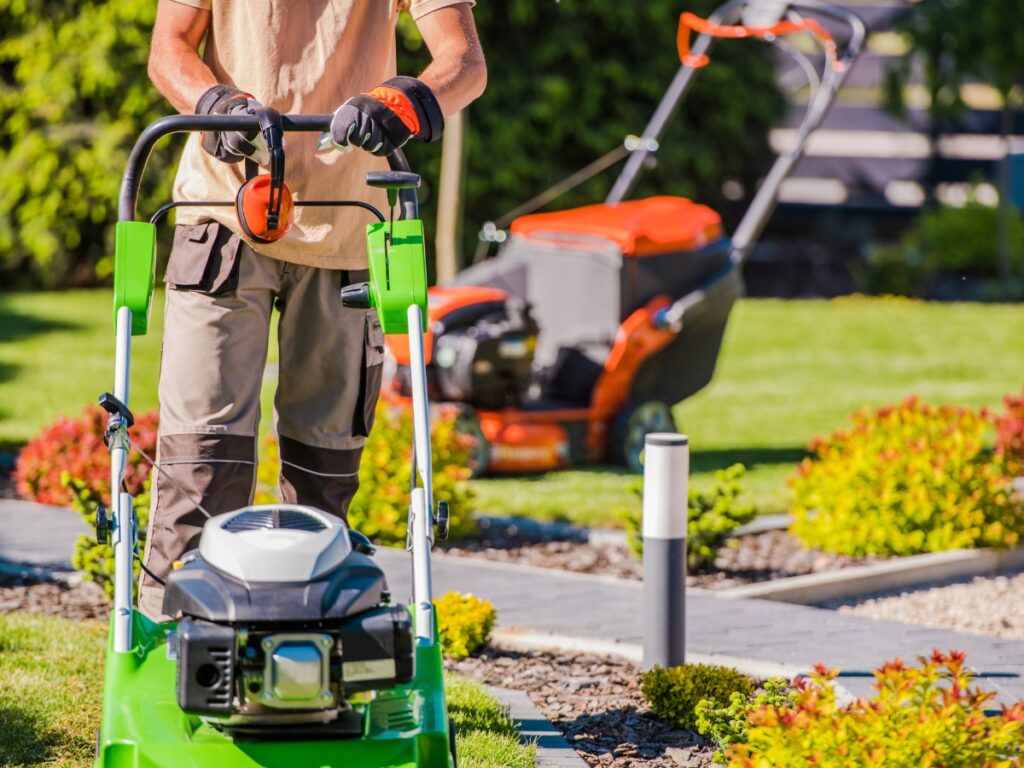
November is one of the best months for hardscape maintenance in Atlanta because the weather supports both effective cleaning and long-lasting repairs. The combination of cool days and mild evenings creates the ideal conditions for washing, drying, and sealing outdoor surfaces. During this period, cleaning agents have enough time to work without drying too quickly, and sealants can cure properly without exposure to extreme heat or frost.
This seasonal window also helps prevent problems before they start. Completing hardscape maintenance in November keeps debris and organic buildup from settling in for the winter, which can lead to stains, erosion, and surface damage later. It also minimizes the risk of freeze-thaw damage that can occur during sudden cold snaps. Taking advantage of this period ensures that pavers, brick, and stone stay in top condition through the colder months and are ready to withstand Atlanta’s humid spring.
How Does Atlanta’s November Weather Impact Hardscape Materials?
Atlanta’s late-autumn climate provides several benefits for hardscape care. Daytime highs in the 50s and 60s, combined with lower humidity and fewer rain events, make it easier to clean and seal surface materials without weather disruptions. Concrete pavers dry efficiently in these conditions, allowing joint sand to stabilize while preventing sealer streaking. Natural stone tends to hold more surface moisture, so giving it a bit of extra drying time before sealing ensures even coverage.
Brick surfaces also benefit from the drier air, which prevents moisture from getting trapped beneath sealant layers. However, early morning dew can still linger, so planning work for mid-morning through mid-afternoon produces the best results. Moss and algae, which thrive in damp summer conditions, slow their growth this time of year, making November the perfect opportunity to clean problem areas and prevent regrowth before winter sets in.
What Are the Benefits of Timely November Hardscape Care?
Performing hardscape maintenance in November offers both immediate and long-term benefits. Regular cleaning and sealing at this time of year prevent organic staining from leaves, reduce weed growth between pavers, and stop moisture infiltration that can weaken the surface during winter. It also helps minimize cracking and shifting that might occur once colder temperatures arrive.
Addressing these issues early extends the lifespan of patios, walkways, and driveways while preserving their appearance. Well-timed sealing strengthens the barrier against water, dirt, and de-icing salts, keeping surfaces easier to maintain in the months ahead. Consistent care each November not only prevents costly repairs but also makes spring cleanup faster and more efficient, ensuring outdoor spaces remain attractive and functional year-round.
For Atlanta homeowners, November represents a critical opportunity to protect and preserve outdoor investments. With favorable temperatures, reduced humidity, and lower biological activity, this month provides the perfect conditions for thorough hardscape maintenance. Whether the goal is to enhance curb appeal, extend material life, or prevent seasonal damage, prioritizing maintenance before winter delivers reliable results and long-term savings.
What Are the Key Hardscape Cleaning Steps for November?

A systematic cleaning sequence in November prepares hardscapes for sealing and winter conditions by removing organic debris, loosening stains, and prepping joints. Begin with a thorough inspection and dry sweeping to clear away leaves and loose sand, then test a small area with an eco-friendly cleaner to confirm material compatibility; follow this with low-pressure rinsing or targeted pressure washing at material-appropriate settings.
For biological growth, utilize biodegradable oxygen-based cleaners applied according to label directions, allowing dwell time, agitating with a stiff-bristled brush, and rinsing during the warm part of the day to ensure surfaces dry completely before nightfall. After cleaning, inspect joints and edges for sand loss and erosion, and stabilize joints if necessary before any sealing application. This cleaning sequence protects finishes and enhances adhesion for subsequent sealing tasks, and the next subsection details specific techniques for effectively removing moss, algae, and organic buildup.
The following table compares cleaning methods across common Atlanta hardscape materials and provides recommended cleaner types and pressure guidelines to help you choose the right approach.
| Material | Recommended Cleaner Type | Pressure/Technique |
|---|---|---|
| Concrete pavers | Oxygen-based cleaner; biodegradable detergent | Low to medium pressure (800–1200 PSI) with 15–25° nozzle, test spot first |
| Natural stone (flagstone, bluestone) | pH-neutral, stone-safe cleaner; oxygen bleach for organics | Low pressure (<800 PSI) or gentle rinsing to avoid surface damage |
| Brick pavers | Oxygen-based cleaner; mild acid cleaners for efflorescence (spot use) | Low to medium pressure with wide fan nozzle; avoid high-pressure blasting |
| Sealed surfaces | Sealer-compatible mild cleaner | Rinse-only or low-pressure wash to avoid stripping sealer |
How Do You Effectively Remove Moss, Algae, and Organic Debris?
Removing moss, algae, and organic debris in November involves a two-stage process: mechanical removal followed by biochemical treatment and rinsing, with an emphasis on drying time to prevent regrowth. Start by sweeping and scraping loose material with a stiff-bristled broom or scraper, then apply an oxygen-based cleaner diluted according to label directions, allowing a 10–20 minute dwell time, and agitate stubborn areas with a stiff brush before rinsing during midday to optimize drying.
Pressure washing can be effective on concrete and brick when set to lower PSI to prevent joint sand displacement; for delicate natural stone, avoid pressure washing and use repeated agitation and rinsing to lift growth. After cleaning, monitor shaded and damp areas and consider applying an approved preventive surface treatment that discourages regrowth; this process reduces microbial load and enhances safety by removing slippery biofilms. Effective moss and algae control naturally leads to safe, eco-friendly cleaner choices and environmental precautions in the next subsection.
Which Eco-Friendly Cleaners Are Best for Atlanta Hardscapes?
Eco-friendly cleaners for Atlanta hardscapes focus on oxygen-based products and biodegradable surfactants that break down organic matter without leaving harmful residues for plants or waterways. Oxygen bleach (sodium percarbonate) formulations oxidize stains and organic films without corrosive residues, making them suitable for pavers and most stone when used at recommended concentrations; citric-acid-based cleaners can effectively remove rust and efflorescence in small sections but require careful plant protection.
When using any cleaner near planted beds or drains, pre-wet adjacent planting areas and rinse diluted runoff into vegetated zones rather than storm drains to safeguard local waterways; using biodegradable detergents and adhering to label instructions minimizes environmental impact.
Choosing the right product also depends on stain type—oil, rust, or organic—and matching cleaner chemistry to stain physics reduces repeat treatments and surface wear. Understanding eco-friendly options and protective application practices sets the stage for proper sealing choices covered in the next major section.
When and How Should You Seal Your Pavers in November?
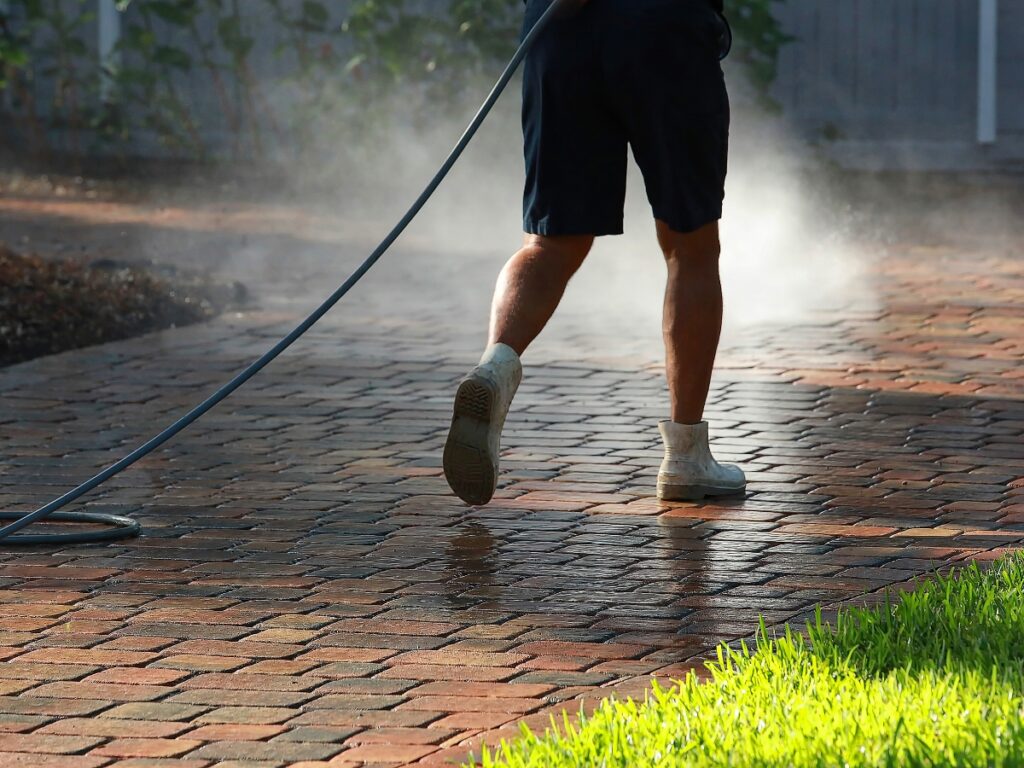
Sealing in November protects pavers and natural stone from winter staining and freeze-related moisture intrusion by providing a barrier that stabilizes joints and repels contaminants while still allowing substrates to breathe. Ideal sealing windows in Atlanta require daytime temperatures consistently above 50°F for at least 24–48 hours with low overnight frost risk and relative humidity below 70% during application and initial cure; these conditions allow penetrating and film-forming sealers to set without trapping moisture.
Preparation is key: complete cleaning, allow full drying (often 24–72 hours depending on material), top up and compact joint sand or polymeric sand, and repair any loose or cracked units before applying sealer. Application technique varies by sealer type—penetrating sealers absorb and protect internally, while film-forming sealers create a surface layer that enhances color and sheen; selecting the correct type depends on the paver material, traffic patterns, and aesthetic goals.
Knowing when to seal and how to prep surfaces ensures the sealer performs through winter, and the next subsection explains the benefits of opting for professional sealing services. The following table compares penetrating vs film-forming sealers across attributes important for November application.
| Sealer Type | Drying Time | UV Protection | Finish | Recoat Interval |
|---|---|---|---|---|
| Penetrating sealer | 24–48 hours to handle; deeper cure longer | Low to moderate (preserves natural look) | Matte/natural | Recoat every 3–5 years |
| Film-forming sealer (acrylic/polyurethane) | 24–72 hours per coat; full cure longer | High (surface film reduces fading) | Gloss to satin | Recoat every 2–4 years depending on wear |
| Silane/Siloxane hybrid | 24–48 hours | Moderate | Natural look, water repellency | Recoat every 3–4 years |
What Are the Benefits of Professional Paver Sealing in Atlanta?
Professional paver sealing provides reliable surface preparation, accurate sealer selection, and controlled application that enhances long-term protection and aesthetic results compared to DIY attempts. Contractors can assess substrate moisture content, joint stability, and microclimate effects, choose the right chemistry—penetrating versus film-forming—and apply uniform coverage with proper equipment to avoid puddling or streaking; this minimizes the risk of premature failure.
Professional crews also offer consistent cure monitoring and may provide warranties or service follow-up that protect homeowners from early sealer breakdown, yielding cost savings by extending reseal intervals and reducing the need for restorative cleaning. For homeowners anticipating heavy usage or commercial wear, contractor-applied sealing ensures performance under stress and aligns sealing schedules with seasonal weather windows like November. Recognizing these professional advantages naturally raises a core question about reseal frequency and when to schedule the next treatment.
How Often Should You Seal Pavers to Maximize Longevity?
Sealing frequency depends on sealer type, traffic, exposure, and material porosity; typical intervals range from every 2 years for high-traffic film-forming sealers to every 3–5 years for penetrating sealers under moderate use. High-traffic driveways, outdoor kitchens, and areas exposed to oils or frequent cleaning may require shorter intervals, while shaded patios with low mechanical wear can go longer between coats; visual cues such as loss of sheen, increased staining, and joint sand deterioration indicate it’s time to reseal.
Routine inspection after seasonal events—late fall and early spring—helps time reseal work during stable weather windows like November, when adequate cure conditions are likely. Combining this reseal schedule with good cleaning and joint stabilization reduces cumulative surface wear and extends overall hardscape life, and the next section covers how to detect and correct drainage issues that undermine hardscape integrity.
How Can You Inspect and Fix Drainage Issues Before Winter?
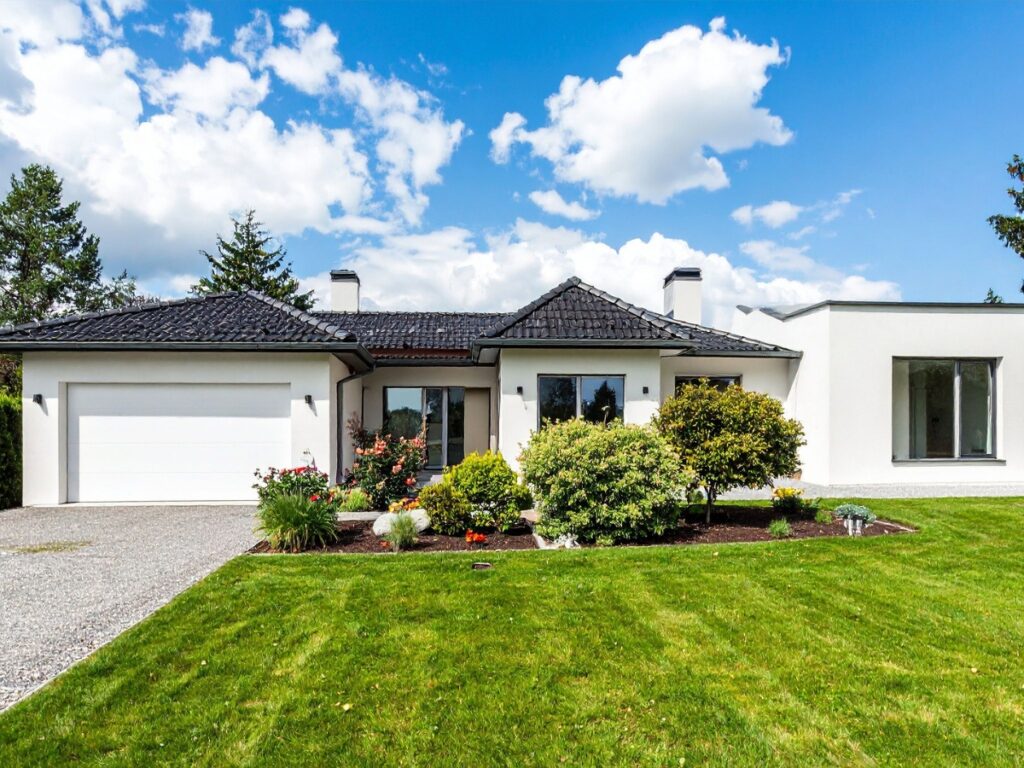
Inspecting drainagebefore winter prevents standing water and saturation that accelerate freeze-thaw damage and undermine paver foundations, so start with a thorough visual and functional check of surface flow and collection points. Look for ponding after rain, soft spots along edges, eroded bedding material, and efflorescence on vertical faces; test downspout discharge points to ensure water is diverted away from hardscape edges, and watch for gutter overflow that dumps sediment and water onto patios.
Corrective actions range from clearing blockages and extending downspouts to adding channel drains, correcting surface slope with regrading, and installing catch basins where concentrated runoff threatens paving. Prioritize fixes according to severity—temporary fixes like extending downspouts and installing splash blocks can be done by homeowners, while regrading or installing subsurface drains may require professional equipment and expertise. The inspection checklist below provides a stepwise approach to identify common drainage problems and match them with appropriate corrective actions.
- Observe after rain: Walk the area and note any ponding locations or slow-draining spots.
- Check gutters and downspouts: Ensure gutters are clear and downspouts discharge at least several feet away from hardscapes.
- Inspect slopes: Verify that surface grade directs water away from structures and hardscape edges.
- Assess sediment buildup: Look for soil washout at paver edges or clogged joints.
- Decide corrective action: Choose cleaning, extension, regrading, or professional drainage installation based on severity.
The component-level EAV table guides owners to targeted fixes and shows when a job escalates from DIY to contractor-level intervention. Proper drainagemaintenance naturally leads to identifying signs of poor drainage in more detail and maintaining gutters and grading effectively.
| Component | Inspection Checklist | Corrective Action |
|---|---|---|
| Gutter | Check for debris, leaks, overflow | Clean gutters; reseal seams; install guards |
| Downspout | Confirm discharge location and flow | Extend downspout; add splash blocks or pop-up drains |
| Surface grading | Verify slope away from structures (minimum 1/8–1/4″ per foot) | Regrade surface; add compacted fill beneath edges |
| Channel drains | Inspect grate clearance and flow capacity | Clear debris; replace or install channel drain if ponding persists |
What Are the Signs of Poor Hardscape Drainage?
Signs of poor drainage include persistent ponding after rainfall, darkened or discolored surface patches indicating prolonged moisture, erosion or washout at paver edges, and efflorescence on masonry that signals salt migration from water intrusion. Additional indicators are sinkage or settling of pavers, increased weed growth in joints where moisture persists, and damp basements or foundation-related moisture issues near property edges; these symptoms point to chronic water management failures that will worsen with winter precipitation.
Observing these signs early gives homeowners a chance to act before freeze-thaw cycles expand cracks or destabilize bedding layers. After spotting signs, homeowners should perform targeted tests—timed drainage observations, downspout flow checks, and probing joint stability—to decide whether cleaning, regrading, or professional drain installation is necessary. Recognizing these diagnostics readies the property for effective maintenance actions described in the next subsection.
How Do You Maintain Gutters, Downspouts, and Grading for Proper Drainage?
Maintaining gutters and downspouts includes scheduled cleaning in late fall, inspecting hangers and seals, and ensuring downspout extensions discharge several feet from hardscapes to prevent undermining bedding material. Regrading techniques require establishing a consistent slope away from structures and compacting fill under edge restraints to maintain profile; where repeated erosion occurs, installing a compacted gravel subbase or channel drains can provide durable conveyance.
Homeowners can perform routine tasks—gutter cleaning, downspout extension, and minor regrading—safely with standard tools, while larger grading, trenching, or subsurface drainage installations should be contracted due to complexity and equipment needs. A maintenance cadence that pairs November inspections with small corrective actions reduces the risk of winter damage and helps preserve joint sand and paver alignment, which connects directly to the minor repairs and joint stabilization steps in the next section.
What Minor Repairs Should Atlanta Homeowners Address in November?
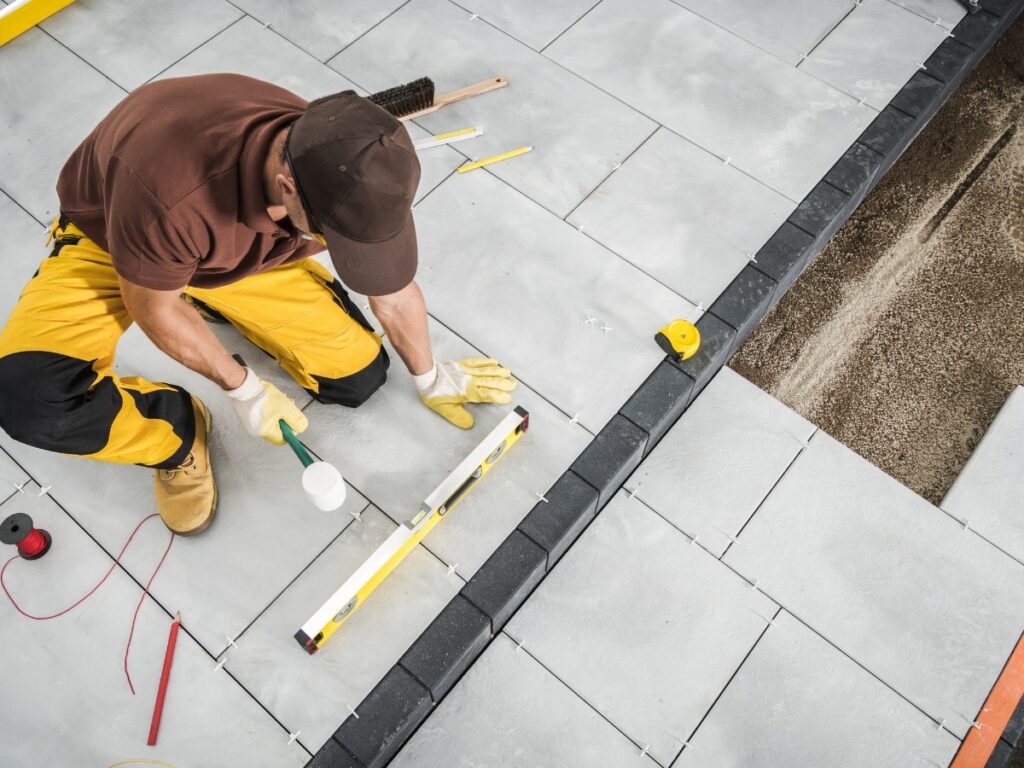
Addressing minor cracks, loose pavers, and joint-sand loss in November prevents small issues from evolving into costly repairs after freeze-thaw cycles or winter runoff events. Small surface cracks and chips can be cleaned, filled with compatible patch compound, and sealed to stop moisture ingress, while loose pavers can often be lifted, the bedding leveled, and the unit reinstalled with proper joint sand.
Joint sand stabilization is especially important before winter because stabilized joints resist washout and weed seed intrusion, maintaining the interlock that controls lateral movement. Prioritize repairs by focusing on edges and areas near drainage outflows where movement and erosion are most likely to start; fix those first, then address isolated cracks and chipped units across the field. Understanding simple repair steps helps homeowners decide what they can do safely versus when to request professional assistance, as discussed in the following subsection.
The minor-repair checklist below outlines common repairs and time/cost considerations for November projects.
- Patch small cracks: Clean, dry, fill with polymer-modified mortar; a quick task for most homeowners.
- Reset loose pavers: Remove affected units, relevel bedding sand, compact, and refill joints; moderate time and effort.
- Stabilize joints: Sweep polymeric sand into joints and compact; prevents washout and weeds.
- Replace chipped units: Source matching paver or stone and reset; may require contractor help for rare materials.
How Do You Identify and Repair Small Cracks in Hardscapes?
Small cracks are identified by measuring width and depth, noting whether cracks track through the bedding layer or only affect the surface; hairline surface cracks with no movement can often be sealed with a flexible joint sealant or patch compound, while deeper through-cracks that reflect settling require lifting and base correction. A practical repair sequence begins with cleaning the crack and adjacent area, drying thoroughly, applying an appropriate filler or polymer-modified mortar for stone/concrete, tooling the surface for a flush finish, and allowing full cure before sealing or applying traffic.
For brickpavers, replace cracked units when possible and use compatible mortar for re-pointing; consistent material matching and color consideration help preserve appearance. If cracks result from subbase failure or significant movement, involve a professional to evaluate base compaction and drainage, since surface patches will not correct underlying settlement. Correctly diagnosing crack causes prevents wasted effort and leads to stable, long-lasting repairs that maintain hardscape integrity through winter.
Why Is Joint Sand Stabilization Important Before Winter?
Joint sand stabilizes pavers by locking units together and distributing lateral loads; stabilizing joints before winter prevents sand washout from fall storms and reduces the risk of displacement from freeze-thaw cycles. Polymeric sands, which bind when damp and compacted, offer superior resistance to erosion and weed growth compared to loose fine sand, and applying them in dry, clean joints before sealing locks the interlock into place.
Proper application involves cleaning joints thoroughly, ensuring full joint depth, sweeping sand in, compacting with a plate compactor, removing surface residue, and activating polymeric binders per product instructions; this multi-step process secures joints against winter weather. Stabilized joints also improve load transfer across the surface and minimize edge movement, which reduces the likelihood of spot repairs in spring. After joint stabilization, sealing, and final inspection, ensure the surface is protected against winter conditions, leading into the outdoor feature winterization steps next.
How Should You Winterize Outdoor Features Like Fire Pits and Kitchens?

Winterizing outdoor fire pits and kitchens in November means safeguarding fuel lines, masonry, appliances, and finishes from moisture intrusion and temperature stress while ensuring operability and safety. For gas components, shut off and, if recommended, isolate small appliance lines, while for wood-burning features, remove ash, inspect masonry for hairline mortar cracks, and clear chimneys or flues of debris; covering with breathable, secure covers prevents moisture accumulation and freeze damage.
Countertops, grills, and cabinetry should be cleaned, drained of plumbing elements, and covered with breathable, water-resistant materials that allow moisture to escape to avoid trapping condensation that leads to mildew and finish degradation. Storing removable components—grill grates, utensils, propane tanks per safety guidelines—reduces corrosion and makes spring commissioning faster, and homeowners should document appliance serials and service dates to assist future maintenance.
What Maintenance Does an Outdoor Fireplace Need in November?
Outdoor fireplacemaintenance in November includes ash removal, chimney or flue inspection, mortar joint checks, and careful covering to prevent moisture penetration during winter months. Begin by removing cold ash and debris, then visually inspect mortar and firebrick for hairline cracks and loose joints that could expand in freeze-thaw cycles; small mortar repairs can be made with compatible refractory caulk or mortar, while extensive damage warrants professional masons.
Check for animal nests or blockages in flues and consider a professional sweep or inspection if soot buildup or creosote is present; proper inspection reduces chimney fires and structural masonry damage. After repairs and cleaning, fit a breathable cover and secure it to prevent water pooling that would soak masonry and risk freeze damage. Completing these fireplace-specific tasks ensures safe winter storage and prepares the feature for reliable use in future seasons.
How Do You Protect Outdoor Kitchens from Cold Weather Damage?
Protecting outdoor kitchens requires draining water lines, securing gas supplies, covering appliances with breathable covers, and removing or storing vulnerable accessories to avoid moisture and freeze damage. Shut off water to outdoor sinks, drain lines and tanks, and consider insulating exposed plumbing; leave gas lines per manufacturer safety recommendations and consult professionals for any appliance disconnection needs.
Clean grill ovens and burners, apply light protective coatings to metal surfaces if appropriate, and cover cabinets and countertops with breathable, fitted covers that avoid trapping condensation which can cause mildew and finish loss. For built-in refrigeration or complex appliances, follow manufacturer winterization instructions and schedule professional servicing if you cannot fully winterize components safely. Proper winterization reduces corrosion, prevents freeze-induced cracking, and shortens spring commissioning time, which aligns with the broader maintenance checklist covered earlier.
Why Choose Atlanta Hardscape Kings for Your November Hardscape Maintenance?
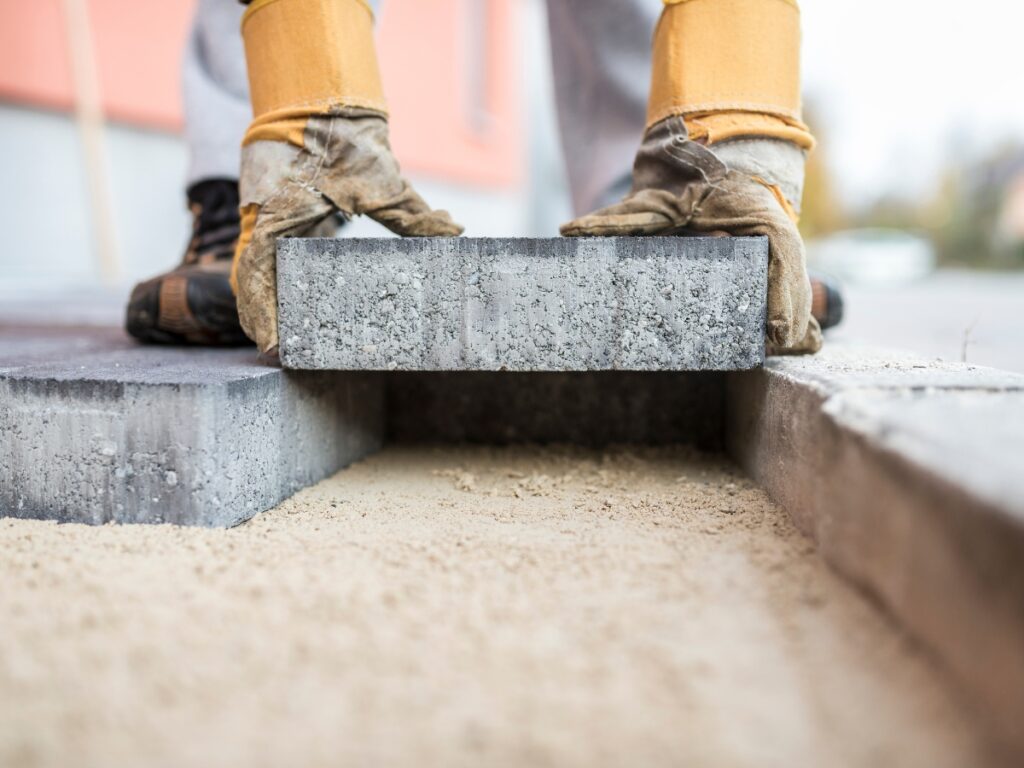
Atlanta Hardscape Kings is a family-owned hardscaping company proudly serving the Metro Atlanta area, specializing in designing, installing, and maintaining custom outdoor living spaces, including patios, retaining walls, fire pits, and outdoor fireplaces. Our core values emphasize masterful craftsmanship, durable solutions, personalized service, and a family-based commitment; these attributes translate into practical advantages for November maintenance, such as correct sealer selection for local microclimates, thorough drainage diagnostics, and warranty-backed workmanship where applicable.
Our primary maintenance services include cleaning, sealing, repair, and winterization—service elements that align directly with the November tasks discussed throughout this guide. Hire Atlanta Hardscape Kings for your hardscaping needs. For homeowners seeking a coordinated November maintenance program, we can perform inspections, recommend material-specific cleaners and sealers, and execute repairs with a focus on long-term durability and competitive pricing that aims to save on future restoration costs.
Atlanta Hardscape Kings is dedicated to outcomes that matter to homeowners—preserving curb appeal, minimizing seasonal maintenance, and extending the life of outdoor investments—by using quality materials and systematic processes tailored to Atlanta’s weather patterns. Contact and scheduling information is provided for your convenience: phone-based scheduling is available via the business phone number, and during an on-site free estimate, our team evaluates surface conditions, joint stability, drainage, and key outdoor features to prepare a prioritized work plan.
The practical inspection during a free estimate covers paver alignment, joint depth, sealer compatibility tests, drainage flow observation, and an evaluation of outdoor appliances for winterization; this helps homeowners decide whether to DIY or to engage professionals for higher-risk tasks. Choosing a local family-owned team brings continuity and local knowledge that can be especially valuable in November when timing and microclimate understanding affect outcomes.
What Makes Atlanta Hardscape Kings’ Craftsmanship and Service Unique?
Atlanta Hardscape Kings distinguishes itself through a family-owned service ethos combined with focused hardscape expertise that emphasizes long-lasting materials and installation techniques suited to Metro Atlanta’s environmental conditions. Our approach pairs personalized project planning—selecting appropriate stone, paver systems, and joint materials—with practical maintenance protocols that reduce long-term deterioration and the need for recurring restorative work.
This craftsmanship focus manifests in attention to base preparation, joint compaction, and sealer selection calibrated for local temperature and humidity patterns to ensure proper cure and adhesion; the result is improved durability, tighter interlock, and fewer maintenance cycles. Warranties and service follow-up, where offered, reflect our commitment to standing behind our work and providing competitive pricing to make preventive maintenance accessible. Understanding these differentiators helps homeowners evaluate professional options as they plan November maintenance.
How Can You Schedule a Free Estimate for November Maintenance?
To schedule a free estimate, homeowners should prepare a brief description of the property’s hardscape areas, note observed issues such as ponding or loose pavers, and choose several available dates in November when the property can be inspected; during the estimate, our technicians will assess cleaning needs, sealer readiness, drainage, and appliance winterization requirements.
Contact by phone is an available option using the business phone number provided in our company information, and the on-site visit typically includes a visual and hands-on inspection, a prioritized scope of recommended work, and an estimate of cost and timeline tailored to November weather windows. H
omeowners should have basic site information ready—surface materials, known past repairs, and any appliance manuals—to make the estimate more efficient and accurate; documenting problem areas with photos can also help pre-visit planning. Scheduling a November visit ensures maintenance occurs within the ideal seasonal window and aligns subsequent repair, sealing, and winterization steps with the guidance provided in this article.
Frequently Asked Questions
Atlanta homeowners frequently ask about cleaning and sealing frequency, stain removal, preventing weed growth, and optimal scheduling windows—questions that reflect the need to protect investments and minimize seasonal disruption. Clear, actionable answers follow from the seasonal and material-specific principles discussed above: regular cleaning removes biological and organic load, joint stabilization prevents displacement, and sealing applied in the right January-to-November window preserves surfaces through winter.
1. What should I do if I notice cracks in my hardscape after winter?
If you notice cracks in your hardscape after winter, it’s essential to address them promptly to prevent further damage. Start by cleaning the cracks and assessing their depth. For hairline cracks, a flexible sealant may suffice. However, deeper cracks that extend through the bedding layer may require lifting the paver, correcting the base, and then refilling with appropriate materials. If you’re unsure about the extent of the damage, consider consulting a professional to ensure a proper repair.
2. How can I prevent ice from forming on my hardscape surfaces?
To prevent ice formation on hardscape surfaces, ensure proper drainage to avoid standing water, which can freeze. Regularly clear debris, such as leaves and dirt, that can trap moisture. Additionally, consider applying a de-icing agent that is safe for your hardscape material. If you have pavers, ensure that the joints are well-stabilized to minimize water infiltration. Regular maintenance and timely repairs can significantly reduce the risk of ice-related damage during winter months.
3. Are there specific winterization steps for outdoor kitchens?
Yes, winterizing outdoor kitchens involves several key steps. First, shut off and drain water lines to prevent freezing. Clean all surfaces, including grills and countertops, and cover appliances with breathable, water-resistant covers to prevent moisture buildup. Remove any removable components, such as grill grates, and store them in a dry place. Additionally, check for any gas line disconnections as per manufacturer recommendations. Proper winterization helps protect your outdoor kitchen from cold weather damage and ensures it’s ready for use in spring.
4. What are the signs that my hardscape needs immediate attention?
Signs that your hardscape needs immediate attention include visible cracks, loose pavers, pooling water after rain, and increased weed growth in joints. Additionally, if you notice efflorescence (white powdery residue) on surfaces, it indicates moisture issues that need addressing. Regular inspections, especially after heavy rains or freeze-thaw cycles, can help catch these issues early. Addressing these problems promptly can prevent more extensive damage and costly repairs down the line.
5. How can I choose the right eco-friendly cleaner for my hardscape?
Choosing the right eco-friendly cleaner for your hardscape involves considering the type of material and the nature of the stains. Look for oxygen-based cleaners that are biodegradable and safe for your specific hardscape material, whether it’s concrete, brick, or natural stone. Always read product labels for compatibility and application instructions. For tough stains, you may need specialized cleaners, such as citric acid for rust. Testing a small area first can help ensure the cleaner won’t damage the surface.
6. What maintenance tasks should I prioritize in November?
In November, prioritize cleaning, sealing, and minor repairs. Start with a thorough cleaning to remove organic debris and stains, followed by sealing to protect against winter moisture. Address any minor repairs, such as stabilizing joints and fixing small cracks, to prevent them from worsening during the winter months. These tasks are crucial for maintaining the integrity and appearance of your hardscape, ensuring it withstands the harsh winter conditions.
7. How can I ensure my hardscape lasts through the winter?
To ensure your hardscape lasts through the winter, focus on proper maintenance in the fall. This includes cleaning surfaces, sealing pavers, and stabilizing joints to prevent moisture infiltration. Regularly inspect for cracks and address them promptly. Additionally, ensure proper drainage to avoid standing water, which can freeze and cause damage. By taking these proactive steps, you can significantly extend the life of your hardscape and minimize the need for repairs in the spring.
Conclusion
Proper November maintenance is crucial for protecting your hardscape investment through Atlanta’s winter months. By clearing debris, sealing surfaces, and inspecting for damage now, you can prevent costly repairs and ensure your outdoor spaces remain beautiful and functional for years to come. At Atlanta Hardscape Kings, we provide expert maintenance services and professional assessments to keep your patios, walkways, and retaining walls in peak condition. Don’t wait for winter damage to set in—call (470) 606-7895 or visit our website to request your free estimate today. Let us help you preserve the beauty and value of your outdoor living areas.
